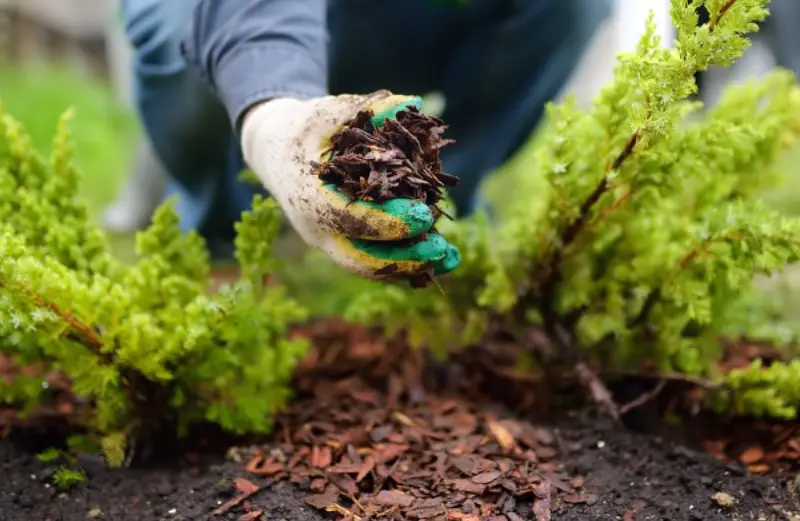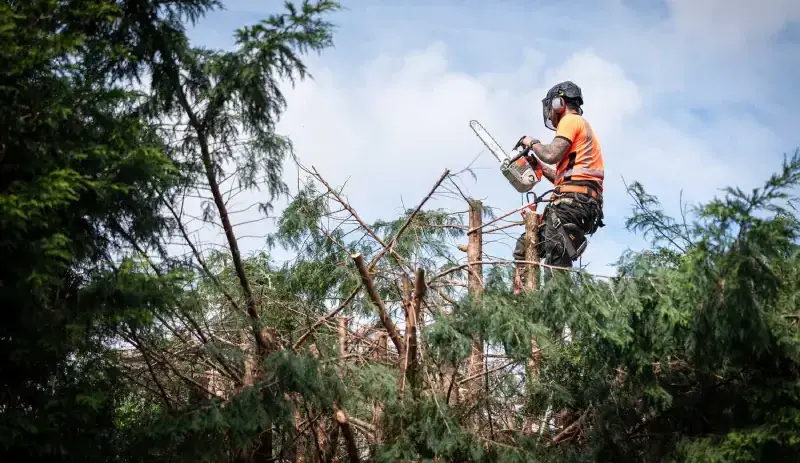Tree trimming is a fundamental aspect of tree care that contributes significantly to the health, appearance, and safety of trees on your property. However, determining the optimal frequency for trimming can be challenging without a clear understanding of tree growth patterns and the various factors that influence trimming needs. In this article, we will delve into these aspects in detail, explaining why regular tree trimming is important and providing comprehensive guidelines tailored to different tree types and seasons.
Understanding Tree Growth Patterns
How do Trees Typically Grow And Develop Over Time?
Trees exhibit distinct growth patterns influenced by a variety of factors, including species, climate conditions, and available resources. Generally, tree trimming helps trees grow at varying rates depending on their species and age. For example, fast-growing species like Silver Maple can gain several feet in a single year, while slow-growing species like Oak may take many years to reach maturity. Understanding the specific growth rate of your trees is crucial in determining their trimming needs and ensuring appropriate care.

Different Species Have Varying Growth Rates And Trimming Needs
Different tree species possess unique growth characteristics and pruning requirements. For instance, conifers grow differently compared to deciduous trees. Some species may require more frequent trimming to maintain their shape and health, while others may need minimal intervention. Conducting research on the growth patterns specific to your tree’s species is essential for effective trimming and overall tree care.
Recognizing When A Tree Needs Trimming Based On Its Growth
Overgrown trees can pose various risks, such as weak branches, obstructed views, or increased susceptibility to diseases. Signs of overgrowth include branches touching power lines, excessive canopy density, or the presence of dead limbs. Regular inspection and monitoring of tree growth help identify these signs and determine when trimming is necessary to maintain both tree health and safety.
Factors Influencing Trimming Frequency
Large Vs. Small Trees And Their Pruning Requirements
The size and type of trees significantly influence the complexity and frequency of necessary trimming tasks. Large trees often require more frequent trimming due to their size and potential impact on their surroundings, while smaller trees may need less attention. Understanding these differences helps in planning and executing appropriate trimming schedules.
Environmental Factors: Climate, Weather Conditions, And Seasonal Impact
Environmental factors, such as climate and weather conditions, play a critical role in tree growth and health. Trees exposed to harsh climates or severe weather may require more frequent trimming to remove damaged or weak branches and maintain overall tree vitality. Considering these factors when scheduling tree trimming helps ensure optimal tree care.
Urban Vs. Rural Settings And Proximity To Buildings
Trees in urban settings face unique challenges, such as limited space and proximity to buildings or infrastructure. Urban trees often require more frequent trimming to maintain clearance from structures and ensure pedestrian safety. Conversely, trees in rural areas may have different trimming needs based on their surroundings and available space.
Importance Of Regular Tree Trimming
How Trimming Supports Overall Tree Vitality?
Regular tree trimming promotes tree health by removing diseased, dead, or damaged branches, which can otherwise hinder tree growth and pose risks to surrounding vegetation. Trimming also enhances air circulation and light penetration within the tree canopy, reducing the risk of diseases and promoting overall tree vigor.
Keeping Trees Visually Appealing And Well-Maintained.
Well-maintained trees contribute significantly to the aesthetic value of your property and landscape. Proper trimming helps maintain a balanced shape and structure, improving the overall appearance of trees and landscapes. Additionally, regular trimming can prevent trees from becoming unsightly or overgrown, enhancing the overall beauty of your outdoor space.
Preventing Hazards Like Falling Branches Or Tree Diseases
Routine tree trimming plays a crucial role in mitigating safety risks associated with falling branches, particularly during storms or high winds. Removing weak or overextended limbs minimizes the likelihood of property damage or injury caused by falling branches. Regular trimming also helps identify and address potential tree diseases or pest infestations, reducing long-term risks to tree health and safety.
Guidelines For Different Tree Types
Best Practices For Trimming Leafy Trees
Deciduous trees, which shed their leaves annually, benefit from pruning during dormancy in late winter or early spring. Remove dead branches and shape the canopy to encourage healthy growth and flowering during the growing season. Thinning the canopy allows for better airflow and reduces the risk of diseases.
Trimming Techniques For Year-Round Greenery.
Evergreen trees retain foliage year-round and can be pruned in early spring before new growth begins. Focus on thinning dense branches to improve light penetration and air circulation within the canopy. Regular pruning also helps maintain the desired shape and density of evergreen trees.
Specific Needs For Fruit Production And Tree Health
Fruit trees require specialized pruning to maximize fruit production and maintain tree health. Prune fruit trees in late winter to early spring, removing competing branches and opening up the canopy to sunlight. Proper pruning also helps prevent diseases and ensures a healthy crop of fruits each season.
Seasonal Tree Trimming Calendar
Ideal Time For Most Tree Trimming; Why And What To Focus On
Spring is often considered the ideal time for most tree trimming tasks, as trees are entering an active growth phase. Focus on removing deadwood, shaping the canopy, and addressing any winter damage or disease issues. Pruning in spring promotes healthy growth and flowering during the growing season.
Maintenance During The Active Growing Season
Summer tree trimming focuses on light maintenance tasks, such as removing water sprouts or controlling excessive growth. Avoid heavy pruning during this season to prevent stress on trees, as they are actively growing and using energy for new foliage development.
Special Considerations For Colder Months And Dormant Trees
Fall and winter are suitable for major pruning on dormant trees. This includes structural pruning to enhance tree strength and resilience, as well as removing any dead or diseased branches. Pruning during these seasons helps prepare trees for the next growing season and promotes overall tree health.
Conclusion
Regular tree trimming is essential for maintaining tree health, safety, and aesthetics throughout the year. By understanding tree growth patterns, identifying trimming needs based on factors such as tree type and environmental conditions, and adhering to seasonal trimming guidelines, you can establish a tailored trimming schedule that ensures your trees thrive and contribute to the beauty and value of your property for years to come. Prioritize safety and consult with a professional arborist for expert advice on tree care and maintenance specific to your landscape and tree species. Following these comprehensive guidelines will help you achieve optimal tree health and enhance the overall appearance of your outdoor environment.

Meet Erwin Grant, a passionate author residing in the bustling streets of the United States. With a keen interest in business, Erwin delves into the world of entrepreneurship through his insightful blogs. With each post, he shares valuable insights and strategies, enriching his readers’ understanding of the dynamic business landscape. Join Erwin on his journey of exploration and enlightenment in the realm of commerce.




